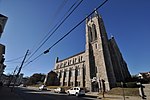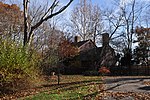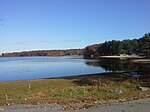Saylesville, Rhode Island
Historic districts in Providence County, Rhode IslandHistoric districts on the National Register of Historic Places in Rhode IslandLincoln, Rhode IslandNRHP infobox with nocatNational Register of Historic Places in Providence County, Rhode Island ... and 3 more
Use mdy dates from July 2023Villages in Providence County, Rhode IslandVillages in Rhode Island

Saylesville is a village and historic district in Lincoln, Rhode Island.
Excerpt from the Wikipedia article Saylesville, Rhode Island (License: CC BY-SA 3.0, Authors, Images).Saylesville, Rhode Island
Chapel Street,
Geographical coordinates (GPS) Address Nearby Places Show on map
Geographical coordinates (GPS)
| Latitude | Longitude |
|---|---|
| N 41.898611111111 ° | E -71.413055555556 ° |
Address
Chapel Street 217
02865
Rhode Island, United States
Open on Google Maps









